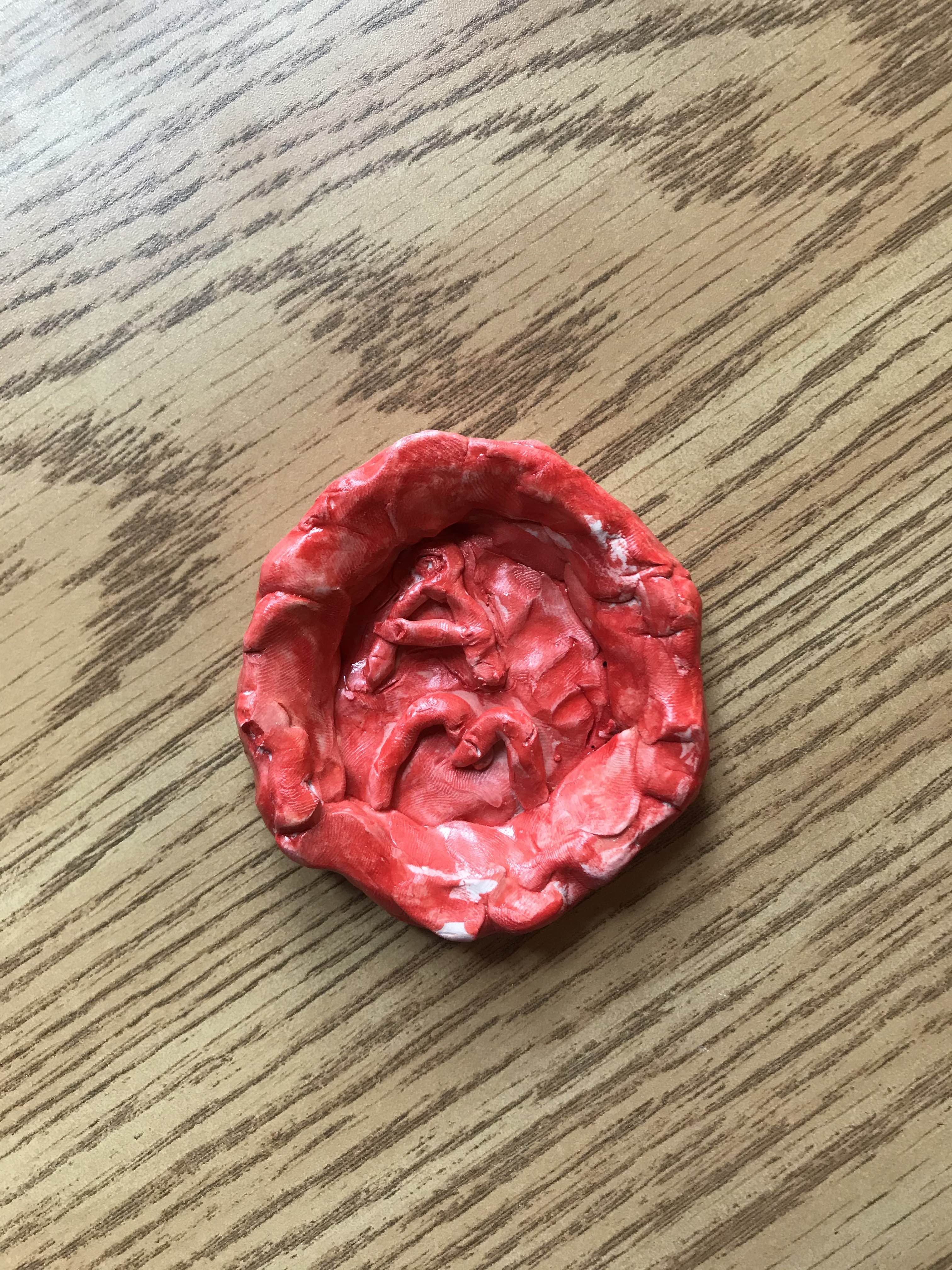
c/o Aiden Malanaphy
When it comes to stress relief and creative release in our world of distanced learning, crafting can provide two for the price of one. Throughout this past semester, I’ve found myself absorbed in the simplicity of bakeable clay, the endless possibilities of watercolor, and the graphic replicability of rubber block printmaking. Free of the formal requirements of studio art courses, personal crafts offer a mindful distraction from the computer screens, deadlines and feelings of impending doom that define both quarantine and finals. With that said, let the following stories of crafting inspire you to take up a similarly relaxing yet thoughtful form of artistry this extended winter break.
Stifled by the two-dimensionality of Drawing I as the course neared its end in May, I decided on a whim to take up clay modeling, thus beginning my crafting journey. While there are countless clay mediums available, I decided to go with the classic, bake-to-harden Sculpey polymer. My first creations, including a small tea bag dish with my initials on it, were largely the product of the fun ways I could move the clay around in my hands. Soon, rolling pieces of clay between my outstretched palms became as innate as washing my hands when returning to my apartment from a walk. I began putting the medium to practical use, creating small figurines of family and friends to give as birthday gifts. My first such work (made with a friend’s help) was for my dad, in which I depicted him using a music stand for a zoom call, complete with a tiny cloth half-suit and cotton hair. While your relatives may not know where to put these clay things, they are sure to nourish a creative spirit on both ends.
Having colored my clay sculptures with watercolors, I then found some thick watercolor paper to let the paints shine on their own. Never in my charcoal and pencil drawing experience had color taken on such a prominence. Cellphone sunset pictures could be replicated with ease, their reds, oranges, and grays no match for endless watercolor combinations. I also found comfort in recreating simple paintings by first tracing outlines and then filling in with colors. While most of these projects would result in splotchy messes, it was freeing to play with color without the pressure of criticism.

c/o Aiden Malanaphy
This is not to say that I abandoned conventional drawing entirely. This year I found myself interested in more architectural images, copying works like Carl Spitzweg’s 1855 “The Intercepted Love Letter” into my notebook. The painting, which I found on Instagram, depicts a simple scene in which a man hangs a note by a thread from his apartment window down to another window below him. With the constant assistance of a ruler, even my poorly sighted drawings felt gratifying to make. For partaking in this kind of craft, I would suggest sectioning your paper into pieces and slowly making your composition from there, abandoning all the other rules of a drawing course along the way.
My pandemic crafting experience culminated in the purchasing of a large rubber slab, a chisel, and an assortment of ink. Excited by the potential within these rubber print-making materials, I immediately got to work, scouring Pinterest for designs that could imbue the free wall in my room with some personality. Certain designs were simple, like one of a mountain range or a Mattise-inspired figure, while others, like two laughing clowns, presented challenges. Nevertheless, something about scraping rubber from between sketch lines to reveal a pair of conspicuous clowns (with much help from my friend) to be placed over my bed was fulfilling. When each rubber carving was finished, I could print it in any color or orientation, resulting in green clowns, gold clowns, and upside-down clowns. This is the easiest form of craft to put away and return to, so that when inspiration strikes again, your original rubber slabs will always be ready.
As we await finals week and a winter break like never before, projects like these can be an invaluable productive relief. You can both create craft with any material you please (from stuff lying around the house to overpriced art supplies) and do with it what you’d like (share it on social media like the Facebook page Wes Creators or keep it to yourself). Whatever you do, allow art to occupy a space of calmness, rather than pressure, in this unpredictable time.
Aiden Malanaphy can be reached at amalanaphy@wesleyan.edu.
Comments are closed